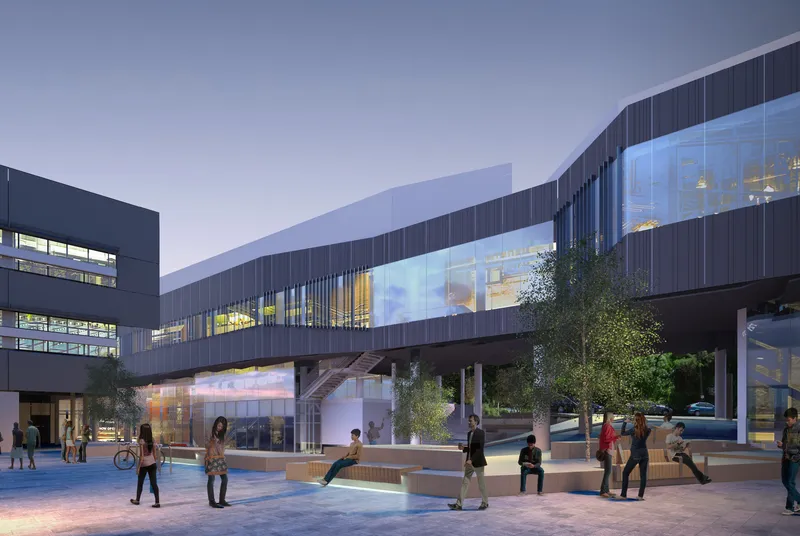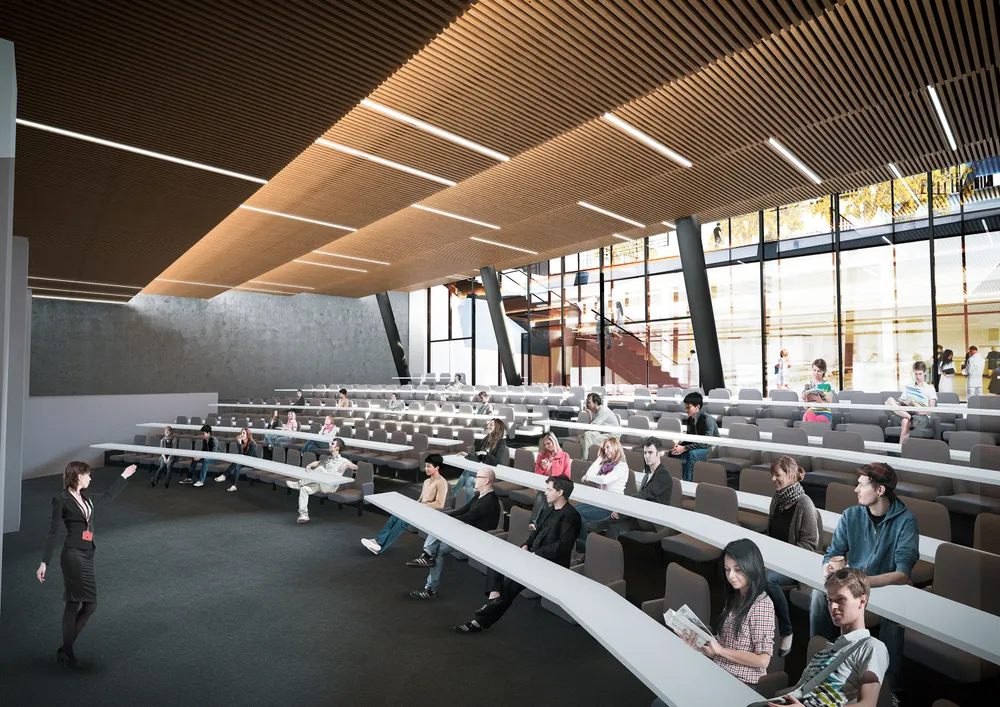NewsPerspectives
Engaging Education


THE THINKING —
Steph McDonald in conversation with Rodney Sampson.
—
SM What was the brief at the beginning of this project?
RS Most simply, Victoria University of Wellington needed a contemporary research and teaching space in line with best modern practice and to reflect its status as New Zealand’s leading scientific research institute.
Science is a key growth area for the university – science, innovation and productivity research – to align with national and international direction. Victoria’s scientists are exploring so many research streams, far more than people are aware of. There is a substantial ecology department where, as one example, scientists are working to ensure the preservation of tuataras. Our challenge was to promote these research areas, to better connect the university to the city and to transform the actual building into a place of pride for the university.
SM What will differentiate this from other laboratory designs?
RS Traditional labs are usually hidden-away, dark and closed spaces removed from public eyes. That’s not where we want to be. We want scientific areas to be an integral part of the university, to be open with natural light coming in. There is a mix of formal learning environments, undergraduate teaching labs, new collaborative areas and social spaces.
Approaching it from a non-science background has breathed new life into traditional designs. We can look at it in comparison to workplaces, and see potential for overlaps. That’s important.
Campuses need to be rewarding places for people to learn, live, study and undertake research. So it has to be a place people like to be in. The physical location of the building is important. It will mean the science faculties will be closer to each other. So instead of operating as individual, smaller schools, it’s been transformed into a science precinct.

Much of the thinking in academia is about opening up connections between different fields to allow cross-pollination of ideas. How have you approached this in the design?
RS The building is open and accessible – so students and researchers can flow between spaces and see what’s happening. The new design will encourage connection between the science schools. It’s about breaking down those barriers between chemistry, biology, physics and so on.
We wanted to create spaces where people can connect, where they’re bumping into researchers from other scientific schools. And there are also opportunities to cross-pollinate with unconnected faculties – arts, commerce, design, and law. It’s a great chance to explore, for example, how computer science and biology might collide.
A key objective for Victoria University is to have the right people undertaking the right research at the right time. and that may mean someone from the chemistry school, and a vet from Massey, and a researcher from, say, Fonterra, coming together to set up a new research stream that becomes productive, profitable and ground-breaking.
TRADITIONAL LABS ARE USUALLY HIDDEN AWAY, DARK AND CLOSED SPACES REMOVED FROM PUBLIC EYES. THAT’S NOT WHERE WE WANT TO BE.